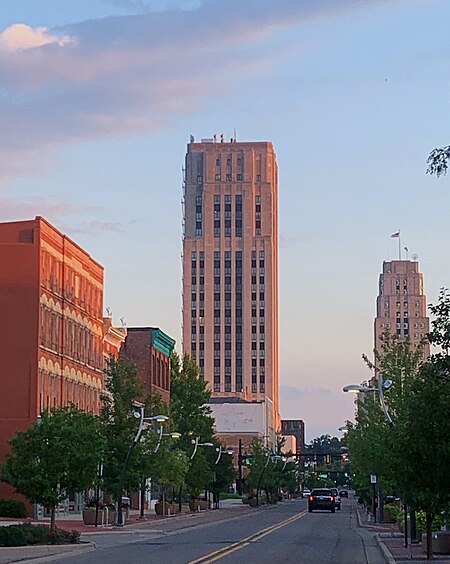Battle Creek, Michigan
1831 establishments in Michigan TerritoryAdventism in MichiganBattle Creek, MichiganCities in Calhoun County, MichiganPopulated places established in 1831 ... and 2 more
Populated places on the Underground RailroadUse mdy dates from April 2017

Battle Creek is a city in the U.S. state of Michigan, in northwest Calhoun County, at the confluence of the Kalamazoo and Battle Creek rivers. It is the principal city of the Battle Creek, Michigan Metropolitan Statistical Area (MSA), which encompasses all of Calhoun County. As of the 2020 census, the city had a total population of 52,731. Nicknamed "Cereal City", it is best known as the home of WK Kellogg Co and the founding city of Post Consumer Brands.
Excerpt from the Wikipedia article Battle Creek, Michigan (License: CC BY-SA 3.0, Authors, Images).Battle Creek, Michigan
Goguac Street West, Battle Creek
Geographical coordinates (GPS) Address Nearby Places Show on map
Geographical coordinates (GPS)
| Latitude | Longitude |
|---|---|
| N 42.312222222222 ° | E -85.204166666667 ° |
Address
Goguac Street West 284
49015 Battle Creek
Michigan, United States
Open on Google Maps






